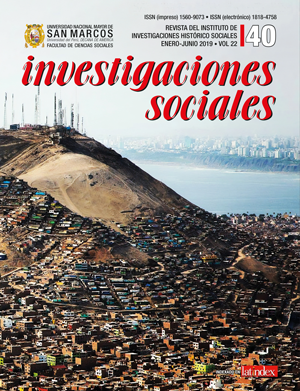The boundaries of death in Peru: conceptualization and analysis
DOI:
https://doi.org/10.15381/is.v22i40.15836Keywords:
Death; evangelization; community; borders.Abstract
This article is an analysis of the contact of two cultures and their way of perceiving Death: what we have termed borders. I say borders, because in many cases they are almost subtle perceptions between one culture and the other, a clear border, in other cases we can observe adaptations or simplifications of both contexts for a better coexistence, and in other options are unbreakable borders, are omissions of a culture, the border with real history and history told, adapted, or invented. For the analysis, we introduce a new working method that has allowed us, for the studies of the precolonial central Andean region, to investigate data that until now were not taken into account: it has been called dimensionality study. The article is a novel introduction about the moment in which Death forms part of not only a concept to be indoctrinated or changed, but, as we shall see, Death is the representation of a community, its sustenance and balance, evangelization, taking into account the degree he wanted to achieve, could not remove an aspect that cannot be conceptualized, but is a much more complex perception that we will show.
Downloads
Published
Issue
Section
License
Copyright (c) 2019 María del Carmen García Escudero

This work is licensed under a Creative Commons Attribution-NonCommercial-ShareAlike 4.0 International License.
AUTHORS RETAIN THEIR RIGHTS:
a. Authors retain their trade mark rights and patent, and also on any process or procedure described in the article.
b. Authors retain their right to share, copy, distribute, perform and publicly communicate their article (eg, to place their article in an institutional repository or publish it in a book), with an acknowledgment of its initial publication in Investigaciones Sociales.
c. Authors retain theirs right to make a subsequent publication of their work, to use the article or any part thereof (eg a compilation of his papers, lecture notes, thesis, or a book), always indicating the source of publication (the originator of the work, journal, volume, number and date).













